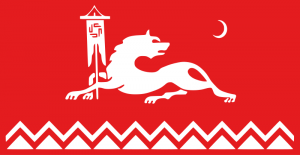Language/Avaric/Vocabulary/Animals
Hi Avaric learners! 😊
In this lesson, we will learn about animals in Avaric. Animals are an important part of our lives and culture, and learning their names in Avaric will help you better understand our language and traditions. Let's get started!
Finish this lesson and explore these related pages: Say Hello and Greetings in Avaric, Education & Fruits.
Basic Vocabulary[edit | edit source]
Here is a list of some common animals in Avaric:
| Avaric | Pronunciation | English |
|---|---|---|
| йете | jete | (goat) |
| гӀайбу | gh'aybu | (sheep) |
| ламбу | lambu | (calf) |
| лам | lam | (lamb) |
| бущан | bushchan | (duck) |
| кӀамба | kh'amba | (beaver) |
| мекъа | meq'a | (fox) |
| тӀома | th'oma | (rabbit) |
You can practice these words by repeating them several times. It is also helpful to practice using them in simple sentences.
Example dialogue:
- Person 1: Йете. (Goat.)
- Person 2: ГӀайбу. (Sheep.)
Cultural Information[edit | edit source]
In Avaric culture, animals are important both for food and for work. Sheep and goats are raised for their meat and milk. Bees are kept for honey. Horses and donkeys are traditionally used for transportation and work in the fields. Hunting is also a popular activity.
The Avar people believe that some animals have symbolic meanings. For example, the eagle is a symbol of courage and strength, while the bear symbolizes power and wisdom.
In traditional Avar stories and legends, animals often play important roles. For example, the Avar epic "Dede Korkut" features a wise wolf who helps the hero solve problems, and "The Deer's Coat of Gold" tells a story about a magical deer who helps a poor man.
Learning Avaric vocabulary related to animals can help you better understand our cultural traditions and stories.
Interesting Facts[edit | edit source]
Did you know that:
- In Avaric, the word for "snake," ӏулам, comes from the word for "fire," лам? This is because snakes were often associated with fire in traditional Avaric beliefs.
- The Avaric word for "bear," Манҵо, comes from the word for "forest," нҳан. This reflects the fact that bears live in forests and are an important part of the natural environment.
- In Avaric, the word for "rabbit," тӀома, literally means "jumping animal." This reflects the rabbit's reputation for being agile and energetic.
Practice Exercises[edit | edit source]
Here are some sentences using the vocabulary we learned:
1. Ламбу кӏоцӏам винашахӏ / Lambu khots'am vinashakh (The calf is drinking milk) 2. ГӀайбу агӏгӏушахӏ / Gh'aybu agh'g'ushakh (The sheep is grazing) 3. КӀамба аумашав / Kh'amba aumashaw (The beaver is swimming)
Now, try making your own sentences using the animals vocabulary we learned!
To improve your Avaric Vocabulary, you can also use the Polyglot Club website. Find native speakers and ask them any questions!
➡ If you have any questions, please ask them in the comments section below.
➡ Feel free to edit this wiki page if you think it can be improved. 😎
Other Lessons[edit | edit source]
- Fruits
- Education
- Days of the Week
- Clothes
- Count to 10
- How to Say Hello and Greetings
- Geography
- Health
- Drinks

